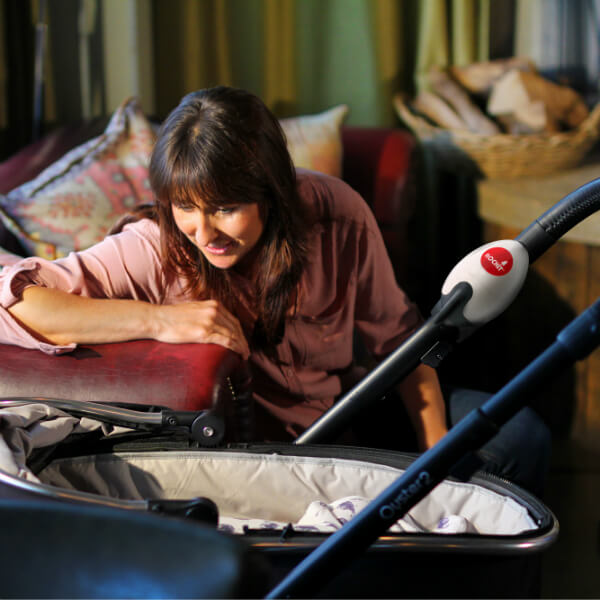The subject of dummies (pacifiers, soothers, binkies etc), is one that can get parents somewhat stirred up. For some, dummies are quite brilliant, providing comfort and reassurance (and a little peace for everyone). For others, they are disgusting and tacky, used to “dummy up” baby and delay communication.
They can be viewed as unhygienic and unhealthy, or as a trendy fashion accessory. And while some parents find the baby dummy causes significant sleep problems, others view them as a lifesaver in establishing healthy sleep habits.
So who’s right? Well, it’s like everything in parenting – there is (on the whole) no right and wrong. As parents we have to do what works for us, for our babies, and for our families. We’re all different.
Now that the Foundation for the Study of Infant Deaths are recommending babies are put to sleep with a soother, it’s likely more and more parents will introduce dummies as a precautionary measure. And as many of us know – some babies love to suck! So it won’t take our little ones long to become dependant on the dummy as a sleep prop.

For some babies, this is no problem. They use their dummy to fall asleep and then sleep all night so everyone’s happy. For others, it’s a different story. At first, baby sleeps really well. Usually until she’s about three or four months old. And then sleep cycles start to establish more clearly and before we know it, we’re getting up 5 times a night to replace the dummy.
But we’re terrified to take it away because at least putting the dummy back in means baby will go back to sleep for an hour or so. What if there was no dummy? Would we just have to stay awake, shushing baby in the hope of one more hour’s sleep before another dawn arrives? When we’re that tired, anything will do.
Most parents I know who have taken the plunge and called it a day with the dummy have done just fine. In fact, after 3 to 7 days, it’s often like it never existed – or so I hear. Sounds too good to be true.
Well for some it is. Some babies move on quickly. Others struggle. They cry and scream and we feel wretched for them and for ourselves. Desperate to sleep we cave in and give them the baby dummy again. Confusing and emotionally challenging for everyone.
Here’s what I suggest to limit dummy dependency and avoid the nightly ‘dummy runs’. Use a Sleepytot try for sleep times only, including nap time. If it’s used for comfort during the day, take it away once your baby is comforted.

Once your baby is asleep, try taking the dummy out so she isn’t sleeping with it in her mouth all night long. In her book, ‘The No Cry Sleep Solution’, Elizabeth Pantley suggests pulling the dummy out just before your baby falls asleep. I know many parents who’ve found this technique works brilliantly.
Encourage your baby to learn to manage the dummy by herself from an early age. Use play to teach her these skills and reward her with lots of praise when she makes progress. Between 6 and 10 months, most babies can find the soother themselves in their cot and go back to sleep independently. But you may need to teach them to do this. The Sleepytot baby comforter will make it easier for your baby to find the dummy herself rather than wake you at night.
Interestingly, research has shown that babies who use a soother might have sleep issues initially, before they learn how to find the dummy. But they later become brilliant sleepers. Dummies can be used to extend night time sleep and day time naps, to help babies relax into sleep and also encourage young toddlers to nap when it’s difficult to wind them down.
Another way the dummy can be useful is to stop habitual night waking. For instance, your baby falls asleep at 7pm whilst sucking her dummy. After a while, the dummy falls out and she sleeps until 4am. For some reason, her body clock is set to rouse her at 4am when she calls for you. You either give her a cuddle, a feed, or get up with her until she falls back to sleep. This is a tough habit to break.
By waking yourself at 3:15 and popping the dummy back in, your baby is very likely to transition to another sleep cycle, instead of waking at 4am. Do this for 3-4 nights in a row and you should have broken the habit. Which means you can all sleep through to morning.
So dummies can go a long way to helping teach your baby to sleep through the night and developing healthy sleeping habits. If your baby does use a dummy, teach her early to find it herself with the Sleepytot try pop it on their chest let them find it themselves and go back to sleep. Practice until baby can do this on their own that way, everyone gets a good night’s sleep.
And if your baby is still waking up five times a night and needing you to replace the dummy towards the end of year one – despite your efforts to help her find it herself, it might be time to let it go. After all, sleep props should help – not interfere with – your baby’s healthy sleep habits.





Leave a comment (all fields required)